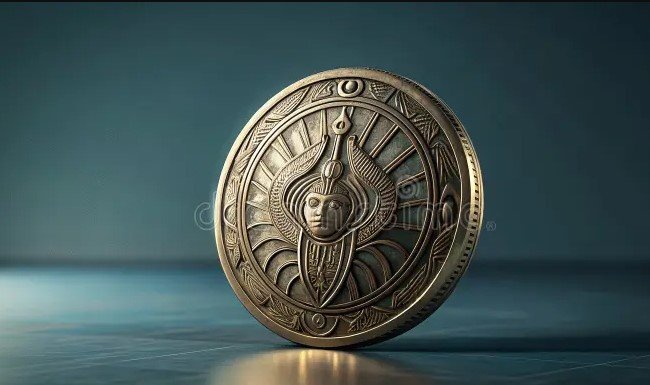Archaeological gems from Ancient Egypt to the Greco-Roman era intercepted in dramatic operation involving customs and criminal investigators
Egyptian customs officers caught something a lot heavier than duty-free goods at the Nuweiba seaport this week. A routine truck inspection turned into a headline-grabbing seizure: 2,189 ancient artifacts packed into crates and destined—illegally—for points unknown.
The estimated value? A staggering 3.5 billion Egyptian pounds, or roughly $72 million. But for Egypt, the real cost would’ve been far higher—another irreplaceable chunk of its ancient legacy lost to smugglers and black-market dealers.
Not Just Coins and Pottery—A Multimillion-Dollar Time Capsule
The cache, which customs officials say spans multiple ancient eras, is one of the most significant smuggling busts in recent years. What makes it so striking isn’t just the number of items, but their diversity—and clear intent to traffic them abroad.
Artifacts from Ancient Egypt, the Greco-Roman period, the Middle and Late Kingdoms were tucked into boxes inside a foreign-driven truck preparing to exit through the Nuweiba port. The driver’s identity hasn’t been released, but the vehicle was intercepted based on a “suspicious load” alert.
A quick scan led to something bigger: a full inspection, followed by a call to Egypt’s antiquities experts. That’s when the real picture emerged.

From Hathor Statues to Kohl Mills: What Was Inside?
The archaeological committee dispatched to examine the haul was stunned. The inventory, according to initial government reporting, reads like a condensed history museum.
Here’s what was found:
-
Statues of deities like Hathor and Horus
-
The iconic “Ankh” (key of life) in multiple forms
-
Amulets made of rare minerals
-
Ancient jewelry including rings, brooches, and earrings
-
Alabaster cosmetic tools like kohl mills and ankle bracelets
-
A wide array of coins—different sizes, metals, and dynasties
-
Sculptures and tools carved from pottery, bronze, wood, and even stone
All items were authentic, confirmed by a joint team from Egypt’s Ministry of Antiquities and local museums.
The Bust That Could Rewrite the Black Market Map
One reason this seizure is raising eyebrows internationally: scale and timing. Smuggling ancient artifacts is a long-running problem for Egypt, but this attempt suggests a network far more organized—and brazen—than usual.
This wasn’t a tourist sneaking out a trinket. This was professional.
Egyptian authorities believe the truck was loaded using multiple storage points in Upper Egypt, with items likely stored for months or even years. Officials say this was “not a one-time operation” but part of a systematic pipeline to move Egyptian cultural treasures overseas.
And that’s a big deal.
Egypt’s War on Heritage Trafficking
This operation is the latest in a growing number of state-led clampdowns on cultural smuggling.
Egypt’s Ministry of Tourism and Antiquities, under mounting international pressure, has made several public announcements this year about “zero tolerance” on illegal heritage trading. But critics have long complained that border controls remain patchy and under-resourced.
This week’s bust suggests otherwise—at least for now.
In 2023 alone, Egyptian authorities said they intercepted over 14,000 pieces of attempted contraband antiquities. Most never make headlines.
Here’s how this seizure compares:
| Year | Artifacts Seized | Estimated Value (EGP) | Location |
|---|---|---|---|
| 2023 | 14,092 | 2.8B | Various (6 ports) |
| 2024 | 5,841 | 1.6B | Alexandria, Luxor |
| 2025 | 2,189 | 3.5B | Nuweiba Port |
While fewer in number, the Nuweiba seizure is the most valuable single haul to date.
Why Global Buyers Are Still Buying
So, who buys this stuff?
That’s the million-dollar—or $72 million—question.
International demand for authentic antiquities remains strong. Wealthy collectors in Europe, the Gulf, and East Asia fuel a shadow economy where ancient items are sold through coded private sales, often with fabricated provenance documents.
A source close to Egypt’s Ministry of Culture says many of these pieces were “ready for display,” cleaned and catalogued, suggesting they were intended for high-end buyers, not middlemen.
Officials suspect some may have been heading to private auction houses abroad, many of which have come under fire for lax heritage sourcing standards.
The Ghost of Tutankhamun: A Country Haunted by Its Own Treasures
For Egypt, losing artifacts is more than theft. It’s an identity crisis.
So many of its national treasures are already abroad—legal and not. From the Rosetta Stone in London to Nefertiti in Berlin, Egypt’s government has spent decades demanding repatriation.
And while it sometimes works—France recently returned looted artifacts—most don’t come home.
That’s why officials called the Nuweiba seizure a “win for Egypt’s soul,” not just its security.
“Each statue saved is a page of history preserved,” one official said on Egyptian state TV. “And each loss is a wound we cannot easily heal.”
